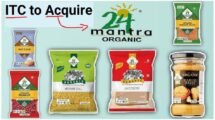Centre distributing fortified rice through ration shops in 90-odd districts under PM-POSHAN.
According to Food Secretary Sudhanshu Pandey, the Centre began distributing fortified rice through ration shops on April 1 in 90-odd districts out of 291 targets for the full year under phase II of the PM-POSHAN Abhiyan, for which it has procured 90 lakh tonnes (lt) of the grain.
In the 75th Independence Day address last year, Prime Minister Narendra Modi stated that his government was determined to distribute fortified rice through all central government initiatives by 2024 in order to address the issue of malnutrition among the poor. In October 2021, the first phase began, with fortified rice distributed through Integrated Child Development Services (ICDS) and Pradhan Mantri Poshan Shakti Nirman-PM POSHAN (erstwhile Mid-Day Meal Scheme).
Also Read | Centre to bear entire cost of rice fortification for Public Distribution at ₹2,700 cr per year.
FSSAI guidelines
The food safety authority FSSAI has mandated that rice be fortified with three micronutrients: iron, folic acid, and vitamin B12.
In addition to ICDS Centers and PM-POSHAN requirements, the government intends to serve 291 aspirational and high load areas in the second phase, with an estimated grain requirement of 175 lt per year. During the months of April and May, he claimed, approximately 2.20 lt of such rice was distributed to 90 districts in 16 states.
Millers have joined the rice fortification effort, not just by installing blenders but also by upgrading their mills, according to Pandey. Mills are being upgraded in the states in preparation for the third phase when the required will climb to 350 lt of fortified rice, he said.
Cost-cutting measures
The cost of fortification is decreasing as the entire ecosystem is scaled up, according to Pandey, who added that certain states are getting it done at around ₹0.50 per kilogram, compared to a cap of ₹0.73 per kg. Earlier, the Food Ministry stated in a presentation that malnutrition costs India at least ₹77,000 crores per year in terms of lost productivity, disease, and mortality.
Iron deficiency anaemia costs the country roughly 1% of GDP (₹2.03 lakh crore). ‘In India, one rupee spent on nutritional interventions might bring ₹34.1 – ₹ 38.6 in public economic benefits,’ according to the ministry.
Concerning the health concerns associated with the intake of fortified rice, the secretary stated that the advantages much exceed the negative aspects.
Also Read | Farmers relief: Centre agreed to purchase six lakh tonnes Rice from Kharif season.
According to Kapil Yadav, an associate professor at AIIMS-Delhi, ‘there are certain unusual dangers associated, but the benefits greatly outweigh the risks.’ Due to bleeding during birth, India has the highest maternal death rate in the world. Rice fortification helps to compensate for this.’ He further stated that food fortification is used in 140 nations.
According to Siddharth Waghulkar, deputy head (Nutrition and School Feeding unit) at the United Nations World Food Programme, fortified rice has a substantially higher micronutrient content than brown or parboiled rice.


















Add Comment